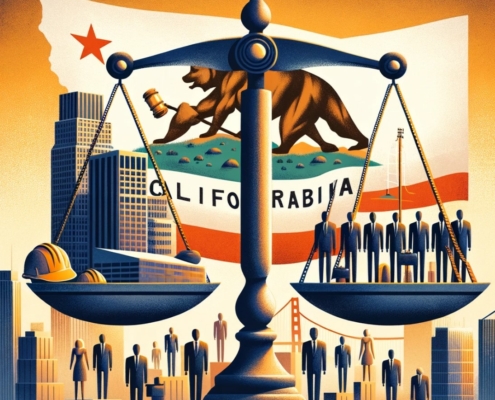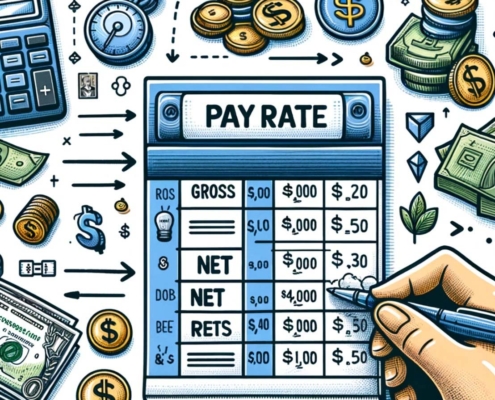For Employers: How should HR handle a complaint of harassment in the workplace.
When an employee makes a complaint of harassment in the workplace, the employer or HR should take immediate action by conducting an investigation and then informing all parties of the result of the harassment investigation.
By Brad Nakase, Attorney
Email | Call (800) 484-4610
Employers and HR responding to a workplace harassment complaint is a serious matter that demands careful attention and sensitivity. The complainant should be kept informed of the steps being taken to address their complaint and ensure that they are comfortable with the process. The manager should communicate with the alleged harasser as well to make sure they understand the seriousness of the situation and the consequences of their behavior.
The first step is to listen carefully to the complainant and take their concerns seriously. They should be provided with a confidential and safe space to share their experiences, and should feel heard and understood. Once a manager has received a complaint, they should investigate the matter promptly, thoroughly, and impartially. They should gather as much information as they can, including any documentation or evidence that supports the complaint.
If the investigation concludes that there has been harassment, a manager should take immediate and appropriate action to take care of the issue. This may include disciplinary measures, reassignment of duties, or other actions to make sure the harassment stops.
The manager or employer should conduct training sessions for all employees on what qualifies as workplace harassment, how to prevent it from happening, and how to report it. This can help prevent future incidents and create a culture of respect and inclusivity in the workplace.
It is important to note that managing a harassment complaint is a delicate process and demands sensitivity, confidentiality, and professionalism. It is recommended that an employer seek legal advice to protect their liability.
In this article, our sexual harassment lawsuit defense attorney for employer discusses how to handle harassment in the workplace as follows:
-
Listen to harassment complaint
The first step is to listen carefully to the complainant and take their concerns seriously. They should be provided with a confidential and safe space to share their experiences, and should feel heard and understood.
An employer should always listen to harassment allegations from employees, and then investigate them properly and thoroughly. Ignoring harassment complaints can lead to a hostile work environment, which harms employee morale and may expose the employer to legal liability. It is important to create a culture where employees feel comfortable reporting harassment and where employers respond quickly and appropriately to any allegations. When an employee makes an allegation of harassment, it is essential that an employer listen carefully, take detailed notes, and ask for any supporting evidence. Employers should also provide a safe and confidential space for the employee to express their concerns.
-
Take immediate action
If an employer receives a complaint or observes workplace harassment, they should take immediate action to stop the behavior and ensure the safety and wellbeing of their employees. The following are some steps that employers can take to address workplace harassment:
- Separate the parties involved. If the harassment is ongoing or if it is an emergency situation, the employer should separate the parties involved immediately. This may include sending the alleged harasser home or reassigning their duties until the investigation is complete.
- Document the incident. Employers should document the incident in detail, including the date, time, location, and any witnesses or evidence. It is important to have a clear and accurate record of what happened.
- Notify HR. The employer should notify HR or another appropriate party within the company who can handle harassment complaints. The complainant should also be informed of the next steps in the process.
- Investigate the complaint. Once a manager has received a complaint, they should investigate the matter promptly, thoroughly, and impartially. They should gather as much information as they can, including any documentation or evidence that supports the complaint.
Conducting a workplace harassment investigation requires a thorough, objective, and confidential process. Here are some general steps that employers can take when conducting a workplace harassment investigation:
- Identify an investigator. The employer should identify a neutral and experienced investigator such as an employment attorney who can conduct the investigation. It is important that the investigator is not involved in the allegations and has no bias or conflicts of interest. Our employment attorneys for employers have over twenty years of experience investigating harassment complaints for employers.
- Notify the parties involved. The investigator should notify the parties involved of the investigation, including the complainant, alleged harasser, and any witnesses. The parties should be informed of the allegations and the next steps in the investigation process.
- Gather evidence. The investigator should gather as much evidence as possible, including documents, emails, texts, and witness statements. The investigator should maintain. Confidentiality throughout the process and ensure any sensitive information is protected.
- Conduct interviews. The investigator should conduct interviews with the complainant, alleged harasser, and any witnesses. The investigator should ask open-ended questions and avoid leading or biased questions.
-
Draw conclusions
Drawing a conclusion based on a harassment investigation requires analyzing all of the evidence gathered during the investigation, assessing the credibility of the parties involved, and making a determination as to whether the harassment occurred. Here are some steps employers can take when drawing conclusions based on a harassment investigation:
- Analyze the evidence. The investigator should analyze all the evidence gathered during the investigation, including documents, witness statements, and any other relevant information.
- Assess credibility. The investigator should assess the credibility of the parties involved, including the complainant, alleged harasser, and any witnesses. The investigator should consider factors such as consistency, plausibility, and corroboration of the evidence.
- Determine whether harassment occurred. Based on the evidence gathered and the credibility assessed, the investigator should make a determination as to whether harassment occurred. The investigator should consider whether the conduct was severe, pervasive, and objectively offensive.
- Determine who was responsible. If harassment occurred, the investigator should determine who was responsible for the conduct. This may include the alleged harasser, as well as any supervisors or other employees who may have contributed to or allowed the harassment to occur.
- Make recommendations for corrective action. If harassment occurred, the investigator should make recommendations for corrective action. This may include disciplinary action, training, counseling, or other measures to ensure the harassment stops and does not recur.
- Document the conclusion. The investigator should document the conclusion of the investigation, including the determination as to whether harassment occurred, who was responsible, and any recommendations for corrective action.
-
Inform both parties of investigation findings
It is generally advisable for employers to inform both parties of the findings of a harassment investigation, as this can help promote transparency, fairness, and accountability. However, the specific details of the findings should be shared only on a need-to-know basis, in accordance with applicable privacy laws and the company’s policy.
When communicating the findings of a harassment investigation, employers should strive to maintain confidentiality and protect the privacy of the parties involved. It may be appropriate to provide a summary of the investigation’s conclusions, without disclosing sensitive details or identifying information. Here are some general guidelines for communicating the results of a harassment investigation:
- Schedule a meeting. The employer should schedule a meeting with each party separately to discuss the findings of the investigation.
- Communicate in a sensitive and respectful manner. When communicating the findings of the investigation, employers should be sensitive to the potential impact on both parties. Employers should communicate the information in a professional and respectful manner, avoiding any language or behavior that could be perceived as confrontational or accusatory.
- Explain the investigation process. Employers should explain the steps taken during the investigation, including how the investigation was conducted, who was interviewed, and what evidence was considered.
- Communicate the conclusions. Employers should communicate the conclusions of the investigation, including whether the harassment was found to have occurred, who was responsible, and what corrective action is being taken.
- Offer support and resources. Employers should offer support and resources to both parties, including counseling, mediation, and other appropriate services.
- Reiterate anti-harassment policies and expectations. Employers should restate their company’s anti-harassment policies and expectations and make it clear that harassment will not be tolerated.
-
Take remedial measures
If an investigation confirms that harassment has occurred in the workplace, an employer should take appropriate action to address the behavior and prevent it from happening again. Here are some steps that an employer can take to deal with a harasser after an investigation:
- Disciplinary action. Depending on the severity of the harassment, the employer can take disciplinary action against the harasser, in accordance with the organization’s policies and procedures. This may include suspension, demotion, or termination of employment.
- Reassignment. The employer may reassign the harasser to a different position or location to prevent future harassment.
- Counseling or training. The employer may provide counseling or training to the harasser to help them understand the impact of their behavior and to promote respectful behavior in the workplace.
- Monitoring and follow-up. The employer may monitor the harasser’s behavior and follow up with the victim and other employees to make sure that the harassment has ceased and there is no retaliation against the victim.
-
Reevaluate harassment policy
After responding to a workplace harassment incident, an employer may wish to review and revise their policies and procedures to prevent future incidents of harassment. This would include strengthening the company’s anti-harassment policy, improving its reporting procedures, and increasing training for employees and supervisors alike. To do, an employer should update definitions of harassment and provide clearer guidelines for investigating complaints. The employer should also review relevant laws and regulations to make sure that their policy is up-to-date and complies with California and federal law.
Have a quick question? We answered nearly 2000 FAQs.
See all blogs: Business | Corporate | Employment
Most recent blogs:
































